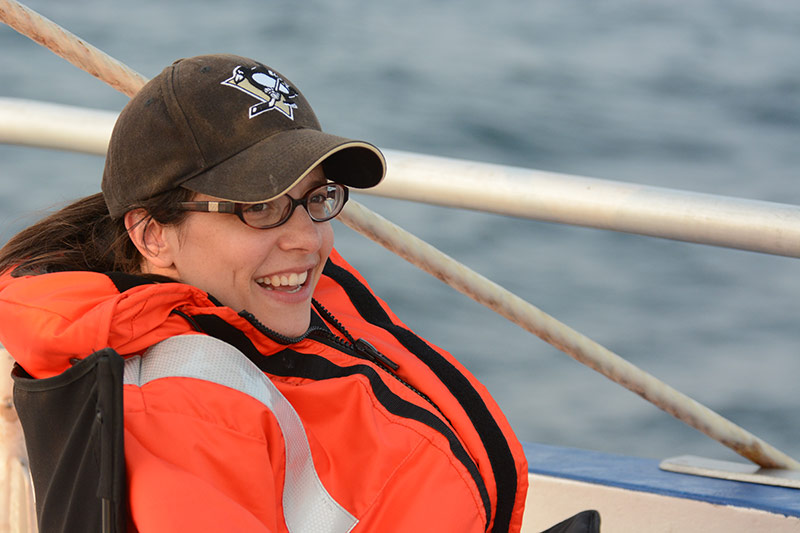Researchers embark on study of baleen whale monitoring systems in the Honguedo Strait
Author: UNB Newsroom
Posted on Oct 1, 2019
Category: UNB Saint John

A new study led by a UNB researcher will help identify optimal locations, technology and scientific approaches to maximize the effectiveness of whale monitoring in and around a major Canadian shipping region with the goal of mitigating ship strike risk.
The study, led by Dr. Kim Davies from the UNB Saint John campus, uses autonomous underwater gliders and fixed moorings, both equipped with digital acoustic monitoring devices, to locate whales in the Honguedo Strait shipping lanes, between Anticosti Island and the northern Gaspé Peninsula in the Gulf of St. Lawrence.
The research team is comprised of Canadian and U.S. researchers, including scientists from UNB, Dalhousie University, Ocean Tracking Network, Woods Hole Oceanographic Inst., JASCO Applied Sciences and Teledyne Webb Research. The team hopes that fine-tuning whale monitoring systems in the Honguedo Strait will help inform dynamic management of these and other shipping lanes in Canada. Ship strikes contribute to whale deaths annually.
“The instruments deployed in early September have performed really well so far, and have detected fin, and sei whales in the Honguedo Strait,” says Dr. Davies. “These data will allow us to measure the presence of endangered whales in and around the shipping corridor, and learn how best to use the technology to support ship strike mitigation efforts.”
Gliders listen to, and report, the calls of blue, sei, fin, humpback and North Atlantic right whales in near real-time using technology developed by collaborators at Woods Hole Oceanographic Institution. It is the only operational system in Canada that monitors North Atlantic right whales in near real-time, but local environmental factors can strongly influence glider “flight” and the efficacy of this and other acoustic systems which rely on detecting and differentiating whale sounds from other sources of noise.
Piloting gliders near shipping lanes also presents a unique operational challenge. So far, the gliders have proven up to the task, and are able to maintain their navigational path in this high current environment.
Transport Canada is supporting the two-month mission during which the glider, deployed in the Gulf of St. Lawrence near Rivíere-au-Renard on Sept. 1, will complete 16-20 transects of a 65km section of the Honguedo Strait. A preliminary report may be possible in January 2020 and recognizes the need for information when planning the summer 2020 season. Validated detections will be disseminated via automated systems, including the publicly accessible WhaleMap.
Media contacts
- Heather Campbell, University of New Brunswick, hcampbel@unb.ca
- Nikki Beauchamp, Ocean Tracking Network, n.beauchamp@dal.ca
Photo credit: UNB
